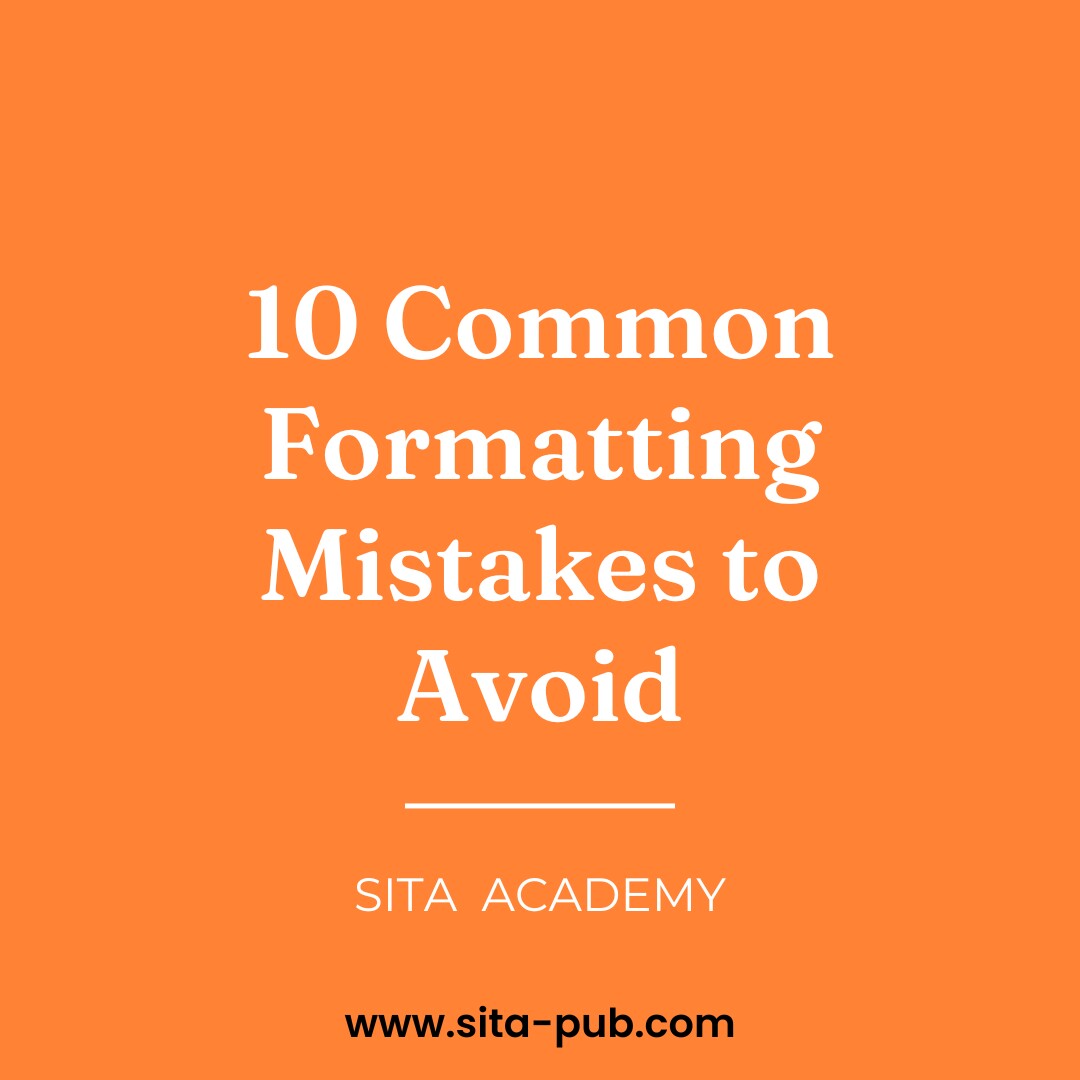10 Common Formatting Mistakes to Avoid


When writing a paper, report, or any document, proper formatting is very important. Good formatting makes your work look professional and helps readers understand your ideas easily. This is especially crucial when you want to submit your paper to reputable journals like Scopus, Web of Science, and PubMed. Here are some common formatting errors to avoid:

Choosing the wrong font or size can make your document hard to read. Most academic papers require a standard font like Times New Roman or Arial in size 12. Using a different font or a larger or smaller size can make your work look unprofessional. Always check the formatting guidelines for the specific font and size required.

Margins are the blank spaces around your text. They help keep your content organized. A common mistake is having different margins on different pages. Make sure to set your margins consistently throughout your document.

Headings help organize your paper and make it easier to read. Each section should have a clear heading. Instead of using vague headings, use descriptive ones like “Introduction” or “Methodology.” This improves the clarity of your document formatting.

Line spacing refers to the space between lines of text. Many academic papers require double spacing, while some may allow single spacing. Not following the required line spacing can make your document look cluttered. Always check the guidelines for the correct line spacing.

Page numbering is important for keeping your document organized. Forgetting to number the pages or numbering them inconsistently can confuse readers. Make sure all pages are numbered in the same way, usually in the top right corner or bottom center.

Different fields of study have different citation style requirements, like APA, MLA, or Chicago. A frequent mistake is mixing styles or not following the chosen style correctly. Always ensure you use the correct style consistently throughout your paper.

Indentation is the space at the beginning of a paragraph. Many formats require the first line of each paragraph to be indented. Not indenting or using inconsistent indentation can make your document look unorganized.

Some documents, especially academic papers, require a title page. This page usually includes the title of your work, your name, and other information like your institution and date. Make sure to check if a title page is required and format it correctly.

If you use different styles for headings or text in your document, it can confuse readers. Stick to one style for each element to keep your document clear.

Every assignment or publication often has specific formatting guidelines. Ignoring these rules can lead to rejection or poor grades. This is particularly important for submissions to reputable journals like Scopus, Web of Science, and PubMed. Always read the guidelines carefully and make sure your document follows them closely.
Avoiding these common formatting mistakes can greatly improve the quality of your writing. Good formatting not only makes your work look professional but also helps your readers understand your content better. By paying attention to details like font, margins, headings, line spacing, and citation style, you can present your ideas clearly and effectively. Remember, good formatting is essential for academic success and maintaining professionalism in your writing.

Need help formatting your paper for journal submission? SITA can assist you! Our team knows the guidelines for top journals like Scopus, Web of Science, and PubMed. We’ll make sure your paper looks perfect to increase your chances of acceptance.
If you have any questions, inquiries, or would like to learn more about our services, please don't hesitate to reach out to us. Our dedicated team is ready to assist you.